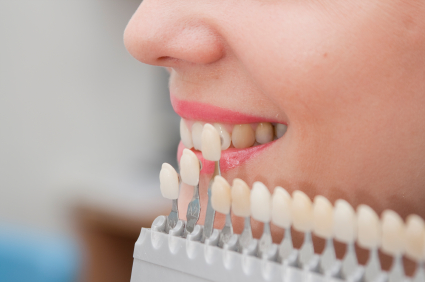Sometimes, in this generation’s society, having a complete set of healthy teeth don’t count for a perfect smile. It can happen that one’s teeth may not have grown evenly and properly aligned or the teeth may not be as white, as perfect white could be. Innovations in cosmetic dentistry have focused on enhancing the appearance of even what qualifies as healthy (but not white) teeth. Everything that can help get that one “perfect smile”.
What are Veneers?
Dental veneers or sometimes called porcelain veneers or dental porcelain laminates are one of those dental innovations which provide patients with that sought-after perfect smile. These are wafer-thin shells of tooth-coloured porcelain materials which are glued or bonded onto the front side of the teeth to create a cosmetic improvement on the teeth’s appearance. Dental veneers are used routinely by dentists to effect cosmetic changes for teeth that are discoloured, chipped, misaligned and worn. These dental veneers are stain-resistant and possess the light-reflecting properties of natural teeth.
How Dental Veneers Look Like
A dental porcelain laminate or a dental veneer looks similar to an artificial fingernail which is translucent. Because it is thin, almost about the thickness of a credit card, light passes through it.
Procedure:
- Getting a dental veneer is a three-step process. The first trip to the dentist is for consultation and finding out what are the things to be done on the existing teeth before putting the dental veneers. The dentist will examine the teeth to check if dental veneers are appropriate for the teeth structure or composition. Dental X-rays will be taken and impressions of the mouth and teeth will be made as well to help the dentist diagnose correctly.
- The second trip to the dentist will be the time to prepare the tooth or teeth for the dental veneers by removing about ½ mm of enamel from the tooth surface which is almost the same thickness of the veneer that will be added to the tooth surface. Veneers are constructed in a dental laboratory using a model or impression of the mouth made by the dentist. The laboratory will take about 2 weeks to finish making the veneers.
- The last trip to the dentist is that part where the dental veneers will be glued onto or permanently cemented to the tooth after the dentist has determined that the veneer fits properly. The dentist may trim the veneer as needed to achieve the proper fit. The tooth where the veneer will be added will be cleaned, polished and etched. Making the tooth rough will allow for a strong bonding process. Special dental cement is used to make the veneer stick well onto the natural tooth. Once the veneer is properly positioned on the tooth, a special light beam will be applied on the dental veneer, to activate the chemicals in the cement. This will cause the veneer to harden or cure very quickly. The dentist will then check your bite and make final adjustments as necessary. A follow-up visit will allow the dentist to check how the gums are responding to the veneers.
People who want to have that perfect smile can visit the best dental office in Mississauga, Ontario to check with the dentist if your teeth condition is suitable for placement of dental veneers.
- St. Lawrence Dentistry Looks Forward To St. Patrick’s Day! - March 12, 2025
- Understanding Dental X-Rays and Radiation: What You Should Know - January 13, 2025
- Happy New Year from St. Lawrence Dentistry! - December 30, 2024










